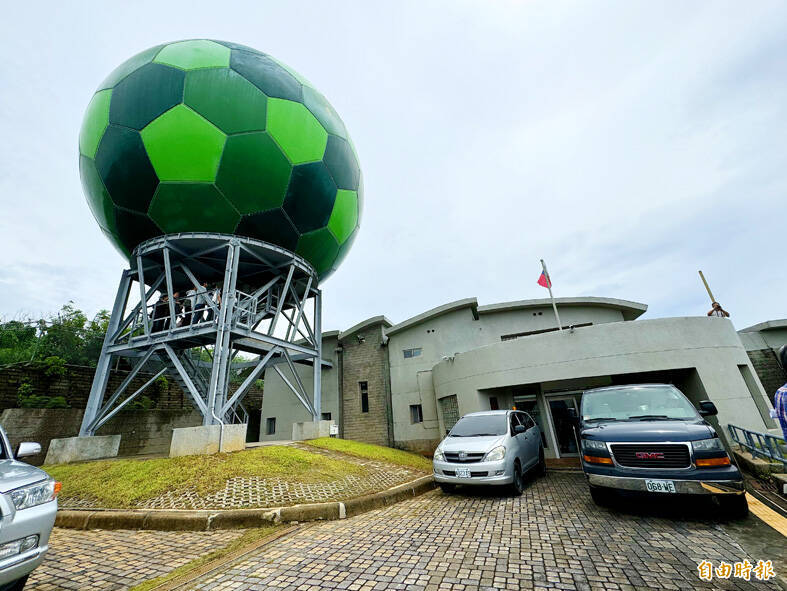《TAIPEI TIMES》 CWA uses new radar for bird migration forecasts

The Kenting Weather Radar Station is pictured in Pingtung County on Monday. Photo: Tsai Yun-jung, Taipei Times
DUAL POLARIZATION RADAR:The system can distinguish between rain, snow and hail, and has the ability to identify signals from living creatures, the weather bureau said
By Shelley Shan / Staff Reporter
Aside from helping the Central Weather Administration (CWA) forecast weather, the weather radar system used by the meteorology agency has another function: identifying the paths of Chinese sparrowhawks and gray-faced buzzards as they fly through Taiwan before reaching Southeast Asian nations.
The CWA has three types of radar systems, CWA Deputy Administrator Fong Chin-tzu (馮欽賜) said.
Those in Kenting National Park, Hualien County, Cigu District (七股) in Tainan, and Wufenshan (五分山) in New Taipei City are wide-range radars that allow it to observe land and sea atmospheric changes.
The CWA last year upgraded the radar systems in Cigu, Kenting and Hualien to dual polarization radar systems, enabling it to better distinguish between rain, snow and hail in the air and estimate rainfall more accurately, he said, adding that data gathered by the radar can improve disaster prevention efforts.
CWA began using the radar system to help animal scientists study migratory birds after they were approached by National Pingtung University of Science and Technology professor Yuan-Shiuan Suen (孫元勳) about whether radar can be to used to track birds, Fong said.
The nation welcomes the arrival of Chinese sparrowhawks and gray-faced buzzards, also known as the “National Day bird,” from Japan and South Korea in September and October, he said.
The weather data in 2003 captured a 50km line formed by Chinese sparrowhawks, Fong said.
In 2005, the CWA used weather radar in Kenting and Cigu to study the migration patterns of northbound gray-faced buzzards in the spring. It identified three possible routes: chances of flying through the Chiayi-Tainan plains were 48.89 percent, flying north via the west side of the Central Mountain Range at 43.29 percent and a 6.28 percent chance they would fly through the north of the Taiwan Strait.
The radar system also helped identify migratory birds that would fly over Baguashan (八卦山) in Changhua County, known among bird watchers to be an ideal place to watch eagles, he said.
“The weather radar can identify signals for birds or other creatures as they are different from those for rain or hail,” Fong said. “The dual polarization radar can accurately identify differences. If artificial intelligence is added, this might be a new opportunity for a more comprehensive understanding of the migratory birds in Taiwan.”
新聞來源:TAIPEI TIMES



















